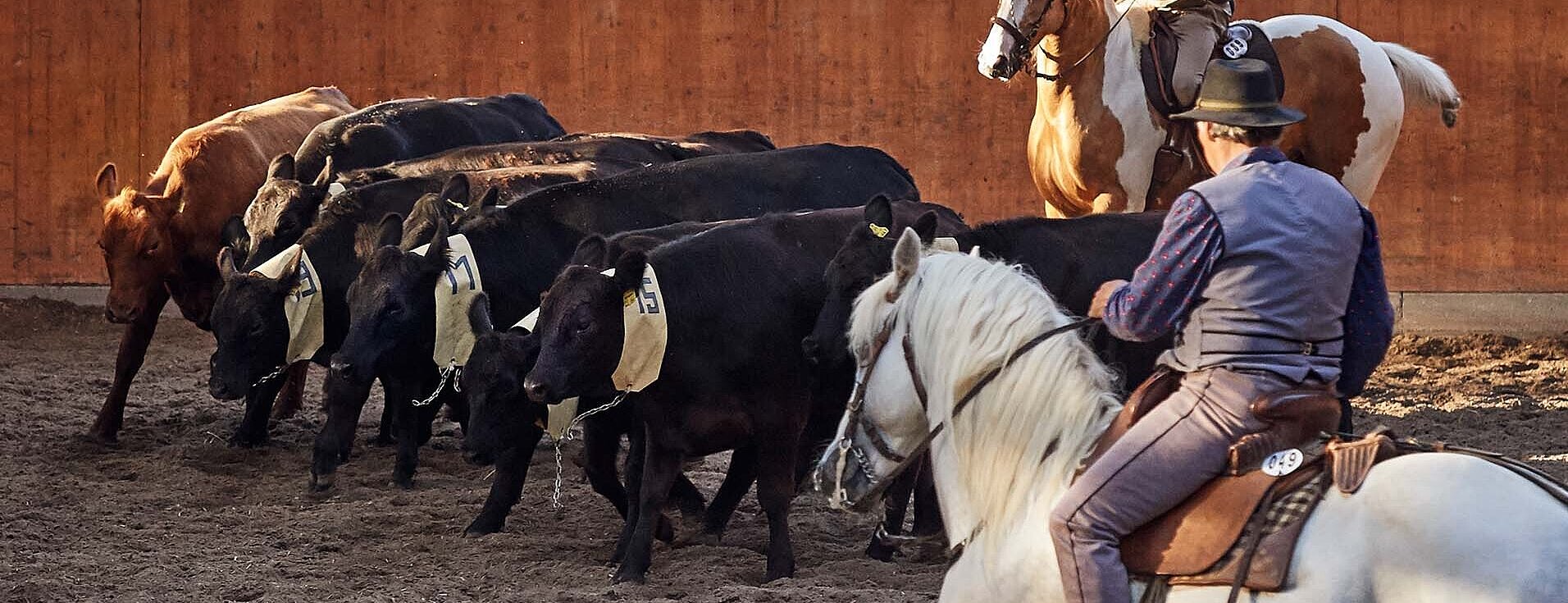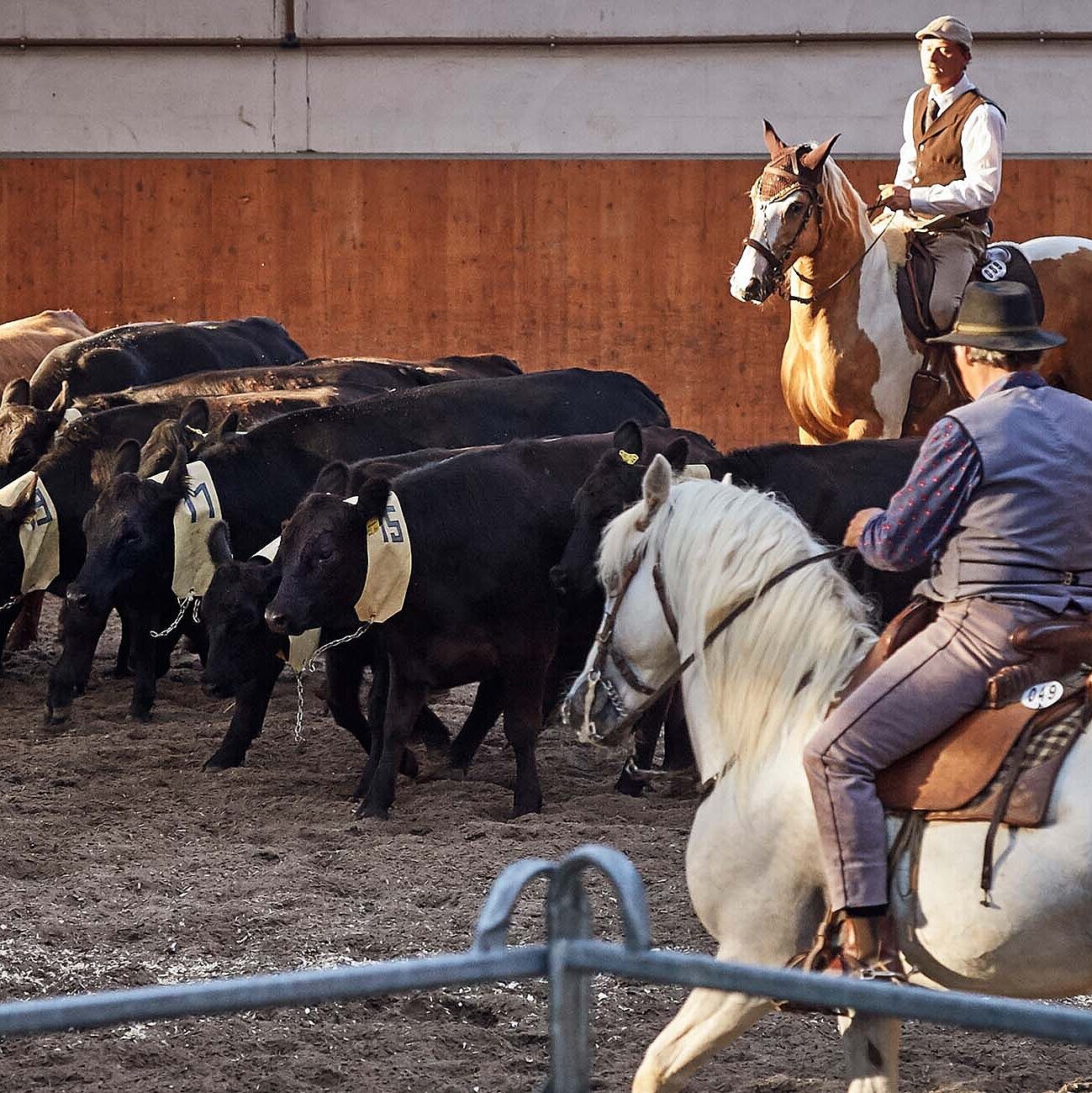What is Working Equitation?
Working Equitation is a young competition discipline that has developed from the tradition of southern European working riding styles such as Doma Vaquera. It summarises all the working riding styles from which Western riding emerged a long time ago.
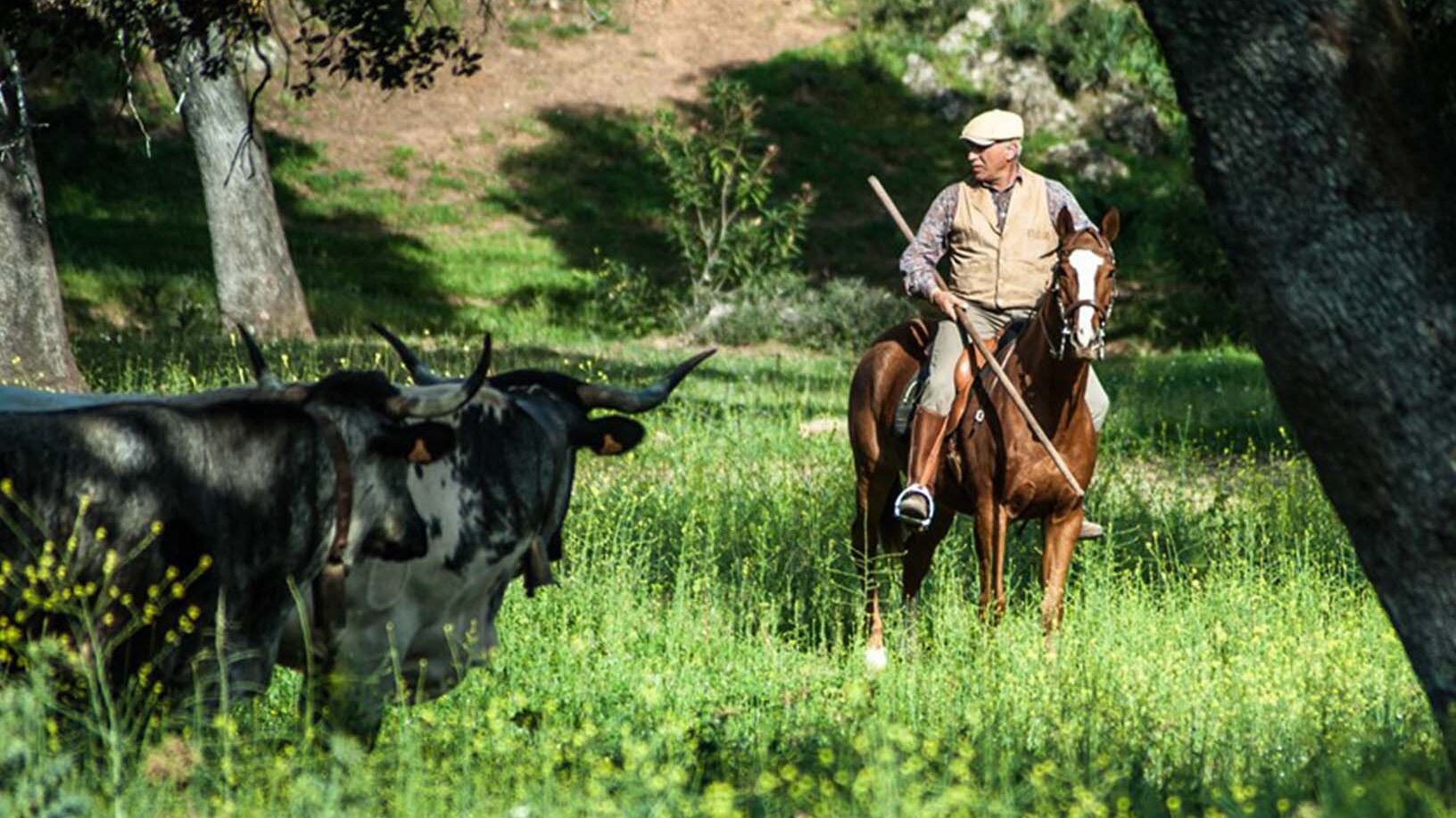
The individual tasks are based on the requirements of the mounted cattle herders of the various European working riding styles. The various national working equitation disciplines can compete with each other through a common set of rules in the Working Equitation competition discipline and at the same time carry on their traditions. Working Equitation comprises four disciplines or tests: Dressage, a dressage trail, a speed trail test and the supreme discipline of cattle work.
What do you need to know about this discipline?
The individual countries are rightly proud of their traditions and the heritage of horsemanship that has developed in each of these countries. The pride in their riding style, their horses and cattle is unmistakable. It is all the more wonderful that the individual countries are still able to present and pass on this pride today in the form of the young equestrian discipline of Working Equitation.
Cattle work as the centrepiece of Working Equitation
Cattle work is the centrepiece of Working Equitation. Without the breeding of cattle in the southern European countries in the sometimes rough terrain, a working riding style would not have developed anywhere. This marvellous work on horseback has only developed as a result of the horses' tasks in agriculture - especially in Spain, France and Italy. The Spanish vaqueros with their noble PRE horses, the Gardien in the south of France with his charming Camargue horse and the Italian butteri are the role models.
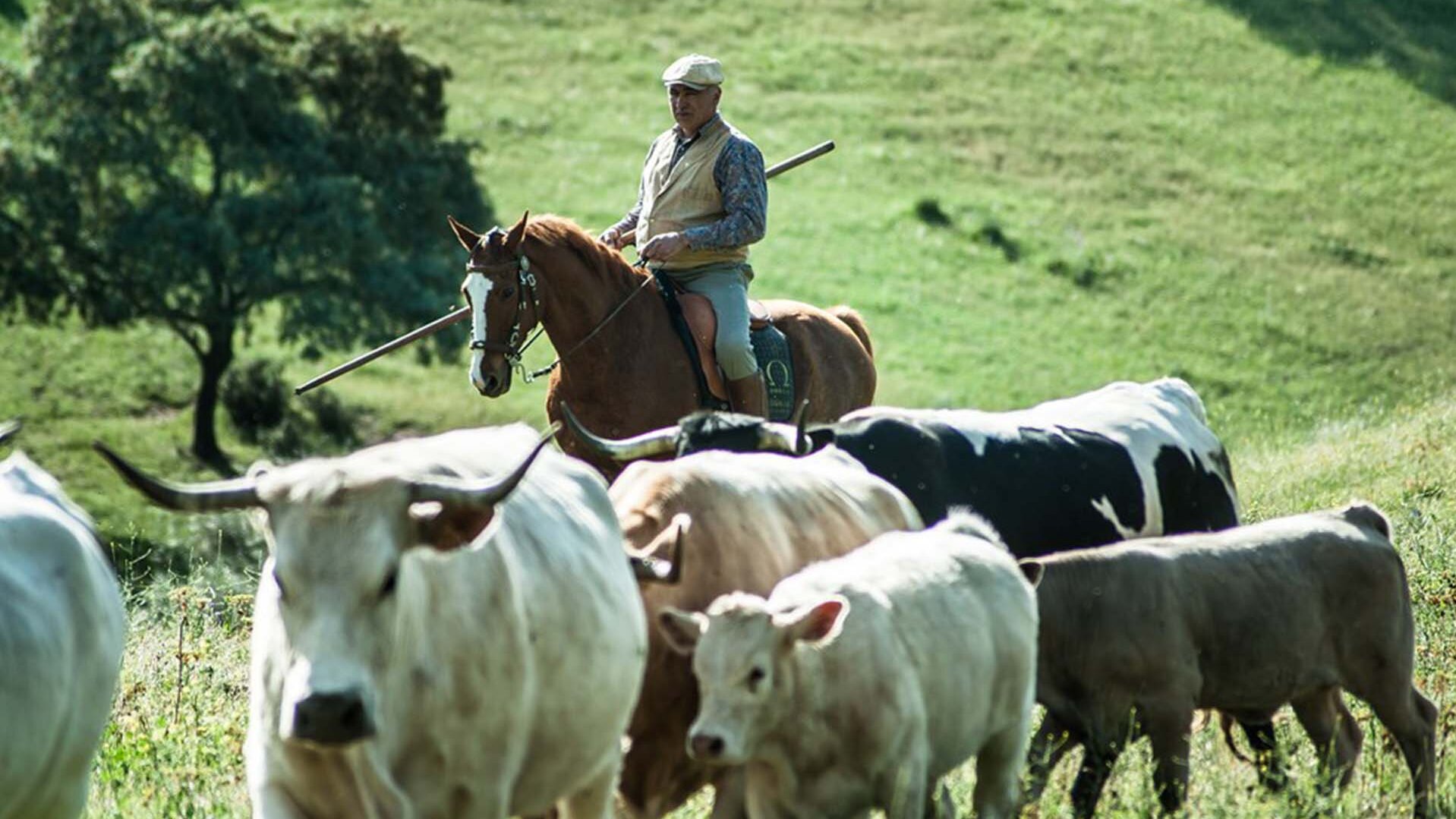
Cattle work in Working Equitation is reminiscent of the work of cattle herders on the ranch and pastures. Due to the barren landscapes, the still very original and wild cattle are kept in large herds on huge pastures. The mounted herdsman follows the herds, drives them to the ranch or to another pasture or has to separate individual cattle from the herd in order to vaccinate them or treat wounds.
How does the discipline of cattle work work internationally?
Teamwork is the order of the day in international Working Equitation cattle work. This refers less to the cattle than to the horse-rider pairs. In the sub-discipline of cattle work according to the international model, a rider must separate an assigned cow from the herd and drive it into a corral.
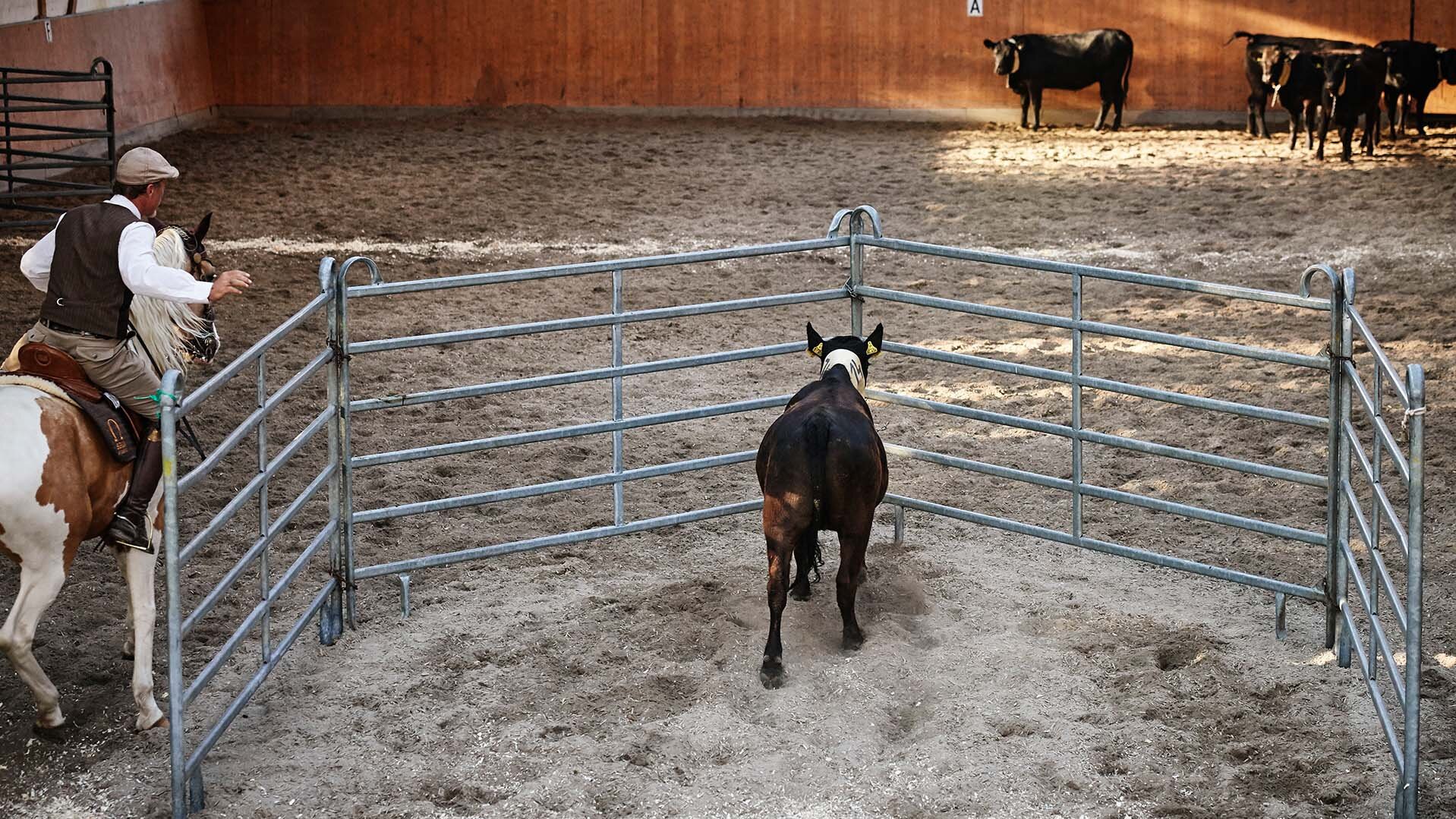
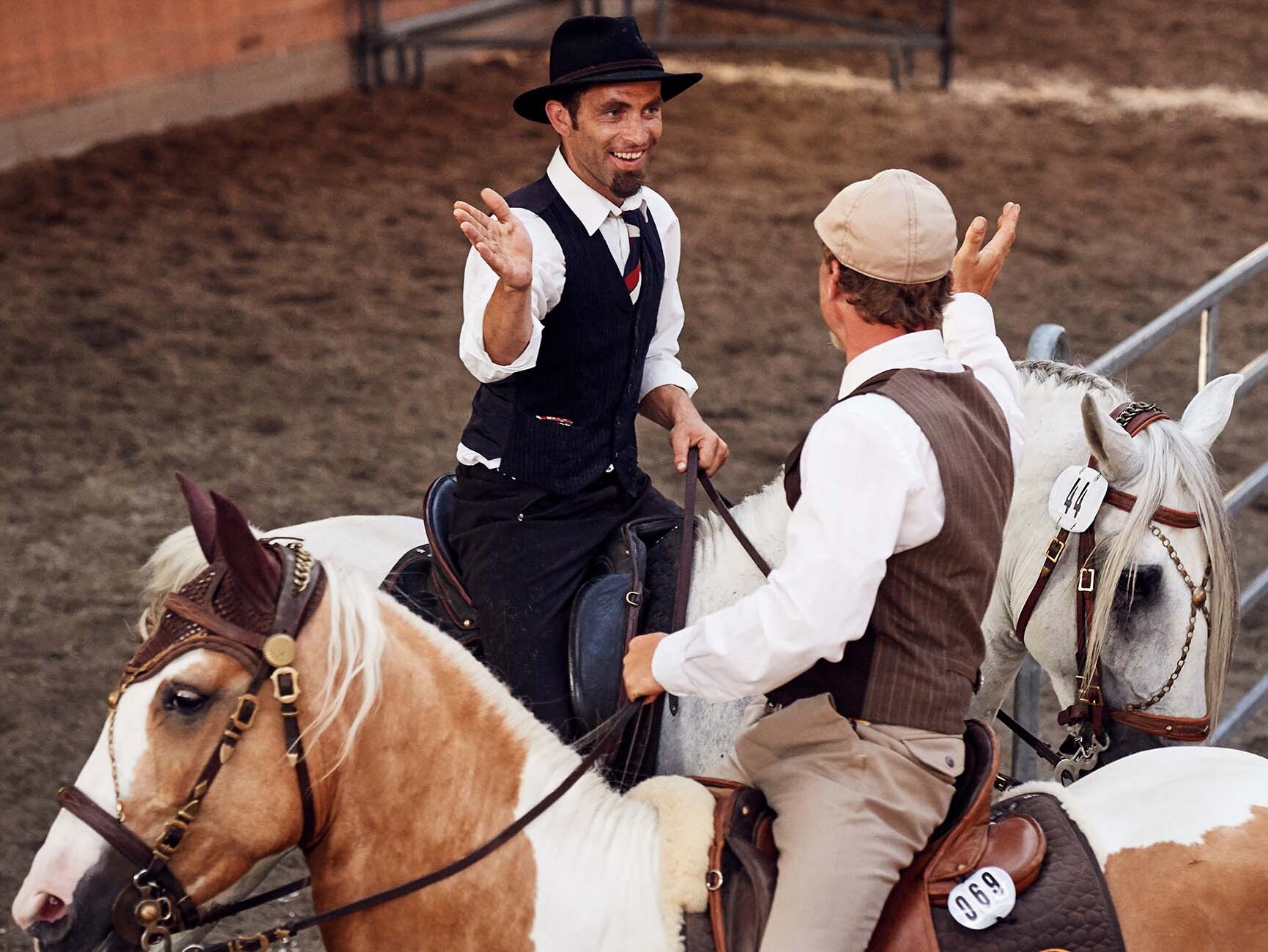
As soon as the rider has separated the cattle from the herd and driven them over a prescribed line, 3 other horse-rider pairs may assist in driving the cattle and controlling the rest of the herd. Only the cattle drawn by lot should separate from the herd and be the only one to cross the line. In the end, it's all about which team can sort out the most cattle in the fastest time and drive them into the corral.
How is the discipline of cattle work organised in Germany?
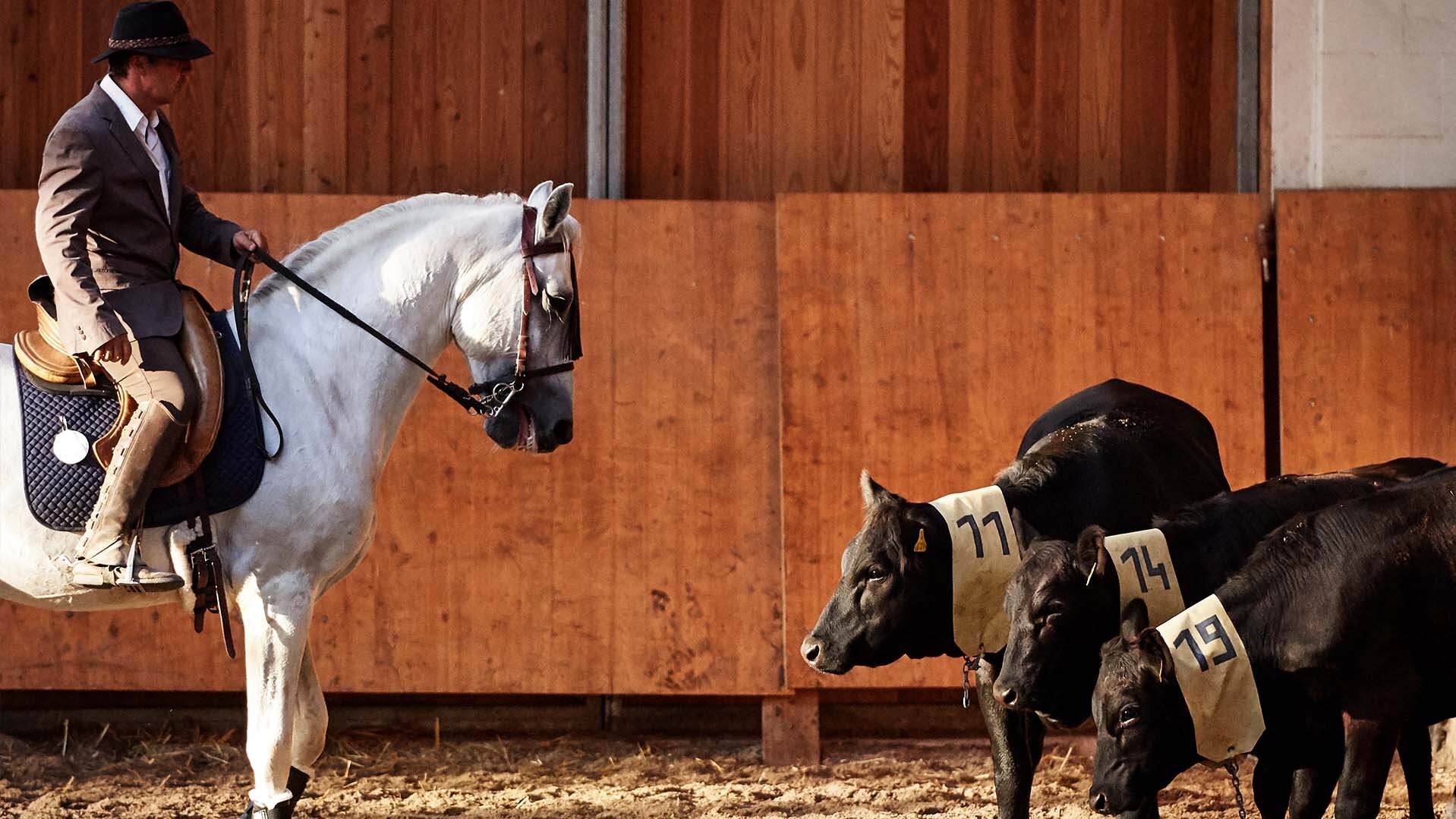
Cattle work in Working Equitation Germany is carried out according to the German regulations of WED Working Equitation Deutschland e.V. as an individual discipline. The horse-rider pair works with the herd of cattle without a helper. The rider is randomly assigned a cow, which he separates from the herd.
The cattle wear numbered collars or have colour markings so that the rider can identify his cow in the herd. At the beginning of the L class, the task is to calmly separate the selected cow from the herd and drive it over a predetermined baseline. The trick is to work in such a concentrated and calm manner that only this cow is driven over the line and the rest of the herd remains calmly behind the line.
Further information and the test regulations can be found here: WED regulations.
Requirements in cattle work
Cattle work is not yet part of the tests at the beginning in the easy beginner and novice classes. In the L class, the cattle work consists of calmly separating the selected cow from the herd and driving it over a predetermined baseline. The trick is to work in such a concentrated and calm manner that only this cow is driven over the line and the rest of the herd remains calmly behind the line.
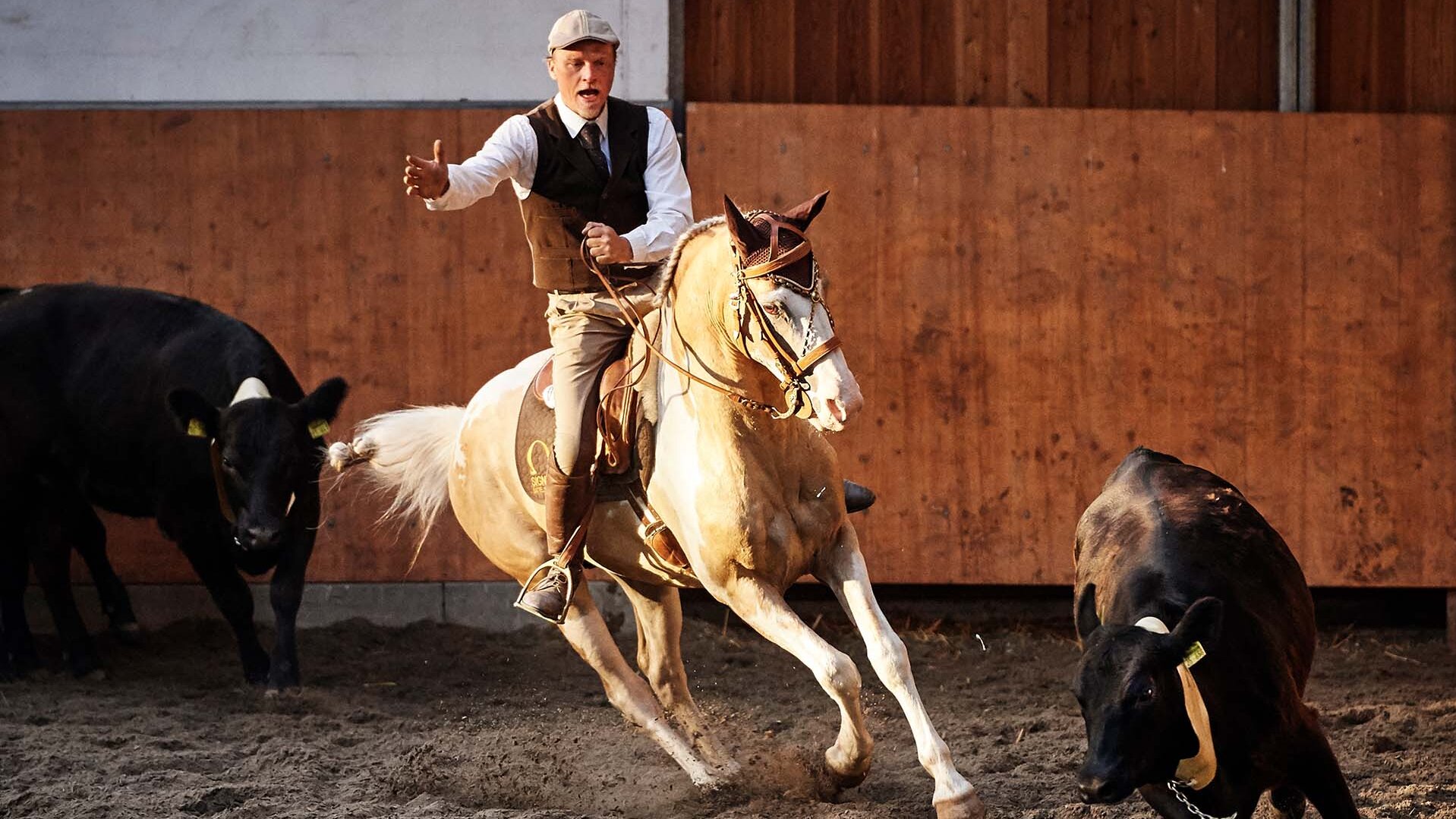
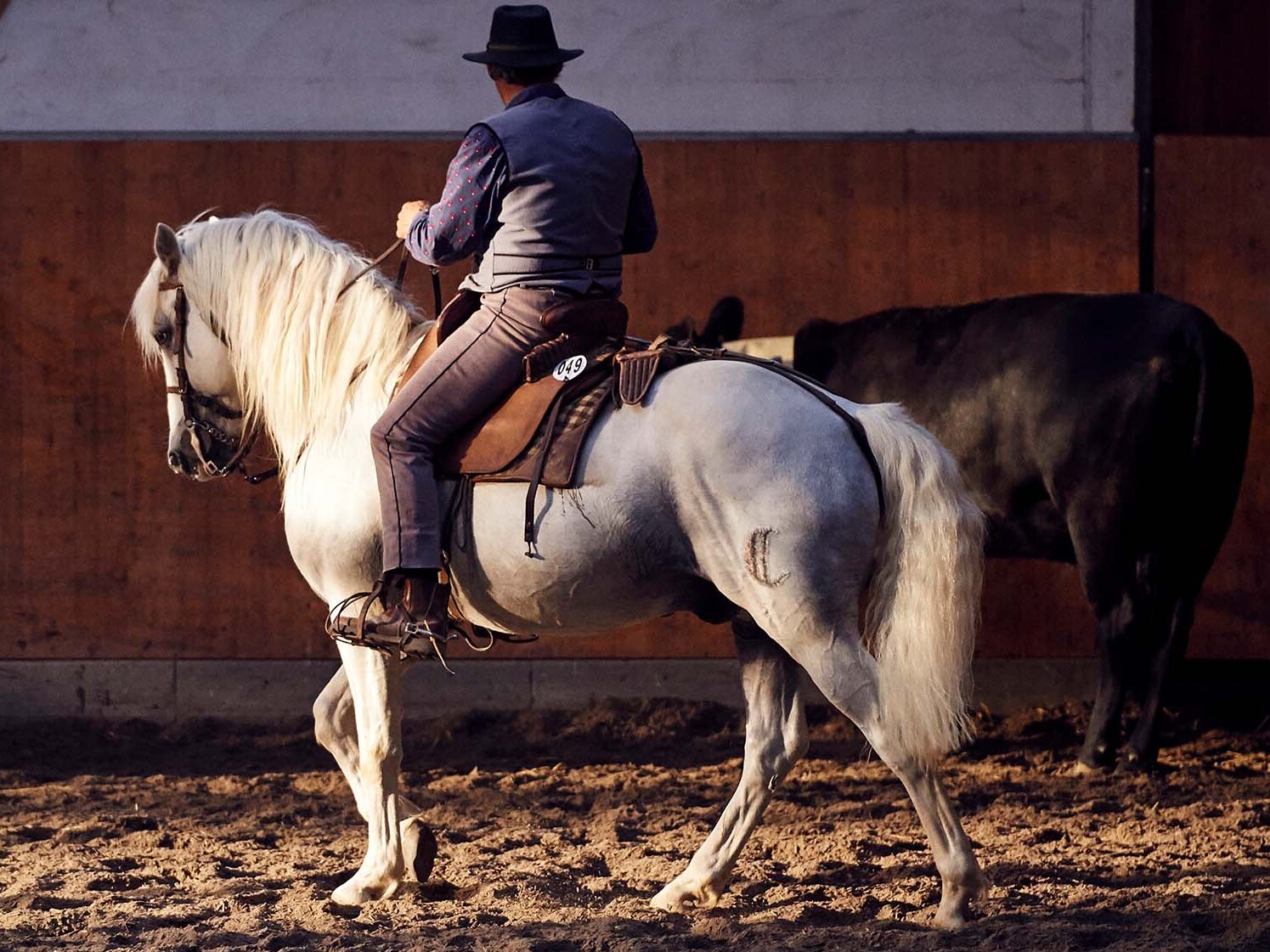
It is not without reason that cattle work in Working Equitation is also called the supreme discipline. The requirements increase in the higher classes. In the master class, the rider must show that he can drive his cattle into a corral at the other end of the arena. To do this, his horse must approach the cattle with confidence, the rider must react sensitively to his horse and the cattle and proceed calmly and skilfully so that the rest of the herd remains in its original place. In the end, the best time counts here too. However, this can only be achieved through calm, concentrated and skilful riding, an understanding of the cattle's behaviour and a little luck in choosing the cow.
Animal welfare in cattle work
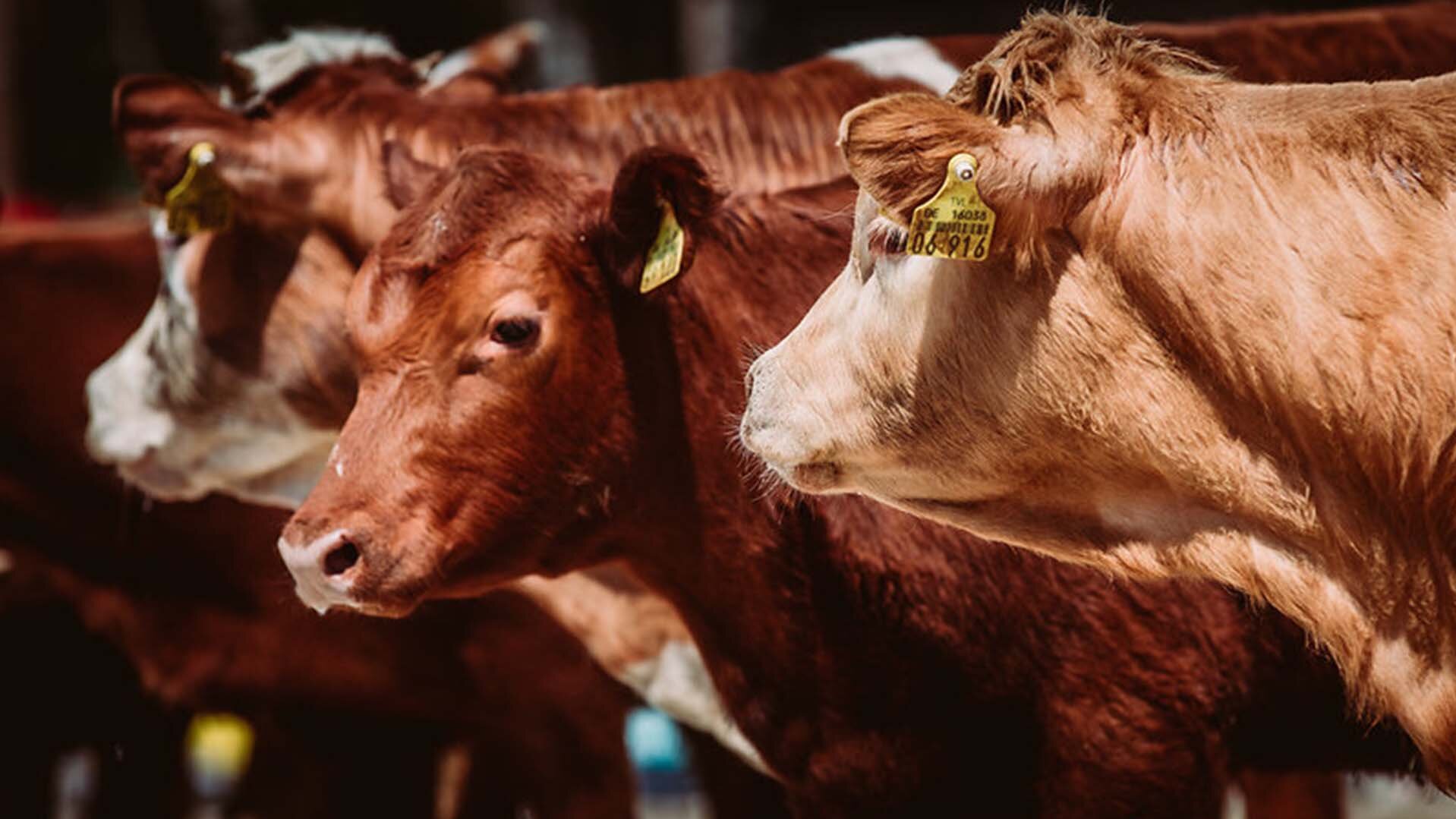
The German show regulations have developed and changed considerably in recent years with regard to cattle work. The background to this is the idea of animal welfare. The aim behind this is to promote and spread cattle work that is calm and as stress-free as possible for the cattle.
International cattle work as a team discipline often enables much more dynamic work on the cattle. In order to avoid riding with too much speed and pressure, this sub-discipline is now ridden as an individual discipline in Germany. After all, calm and safe work by the rider-horse pair best reflects the idea of traditional work riding and is often the best indication of a good time.
What the horse must be able to do
Cattle work can be learnt with almost any horse. Compared to cowhorse or cutting in western riding, a working equitation rider does not need a horse with a cow-sense.
Horses and riders learn the requirements for cattle work in Working Equitation in a special cattle course. The sub-discipline of cattle work presents horses and riders with special challenges and special training. On the one hand, getting the horse used to the cow as an animal, reading the herd and the behaviour of the cattle and learning fine aids for the required turns and lessons.
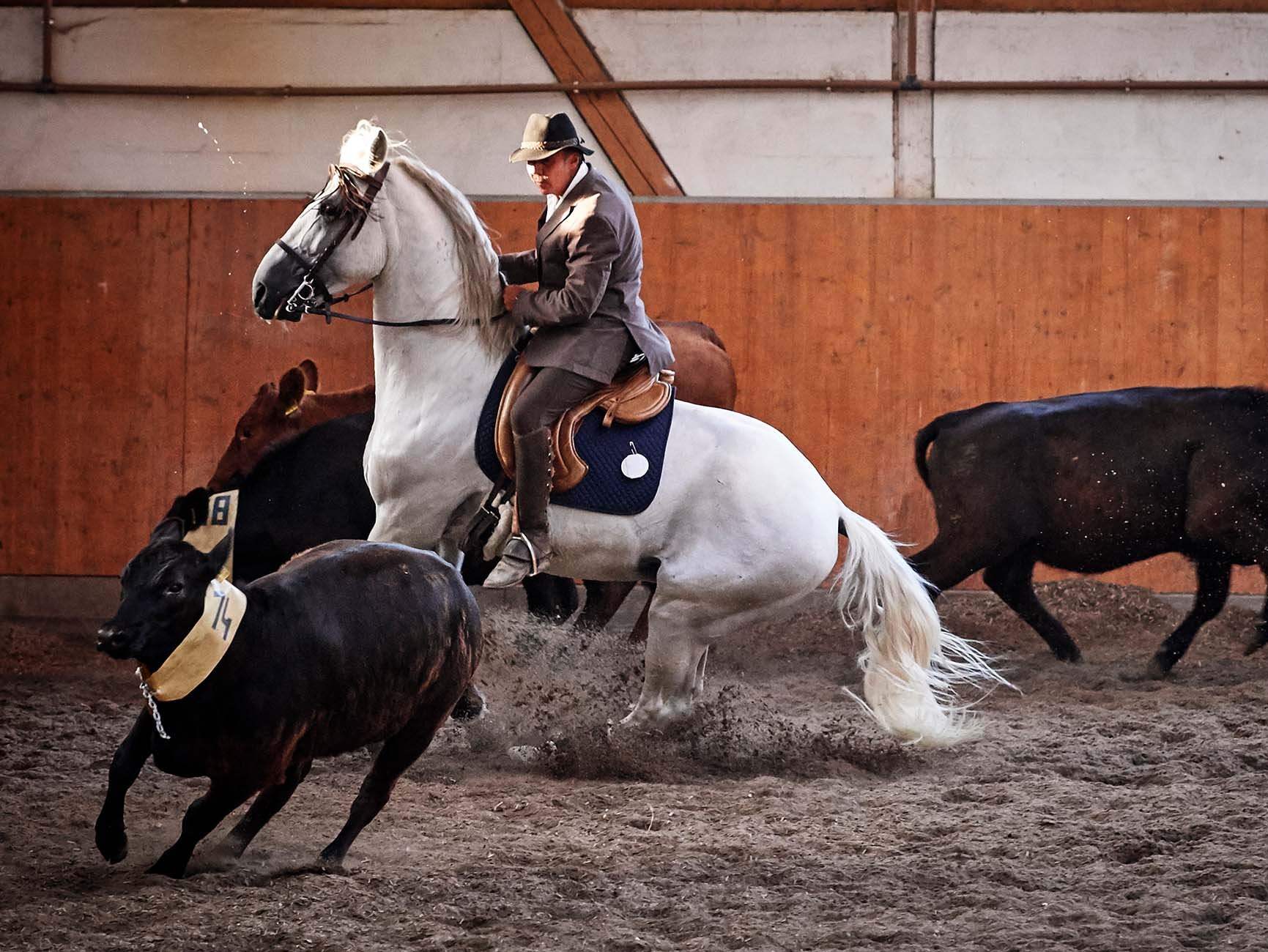
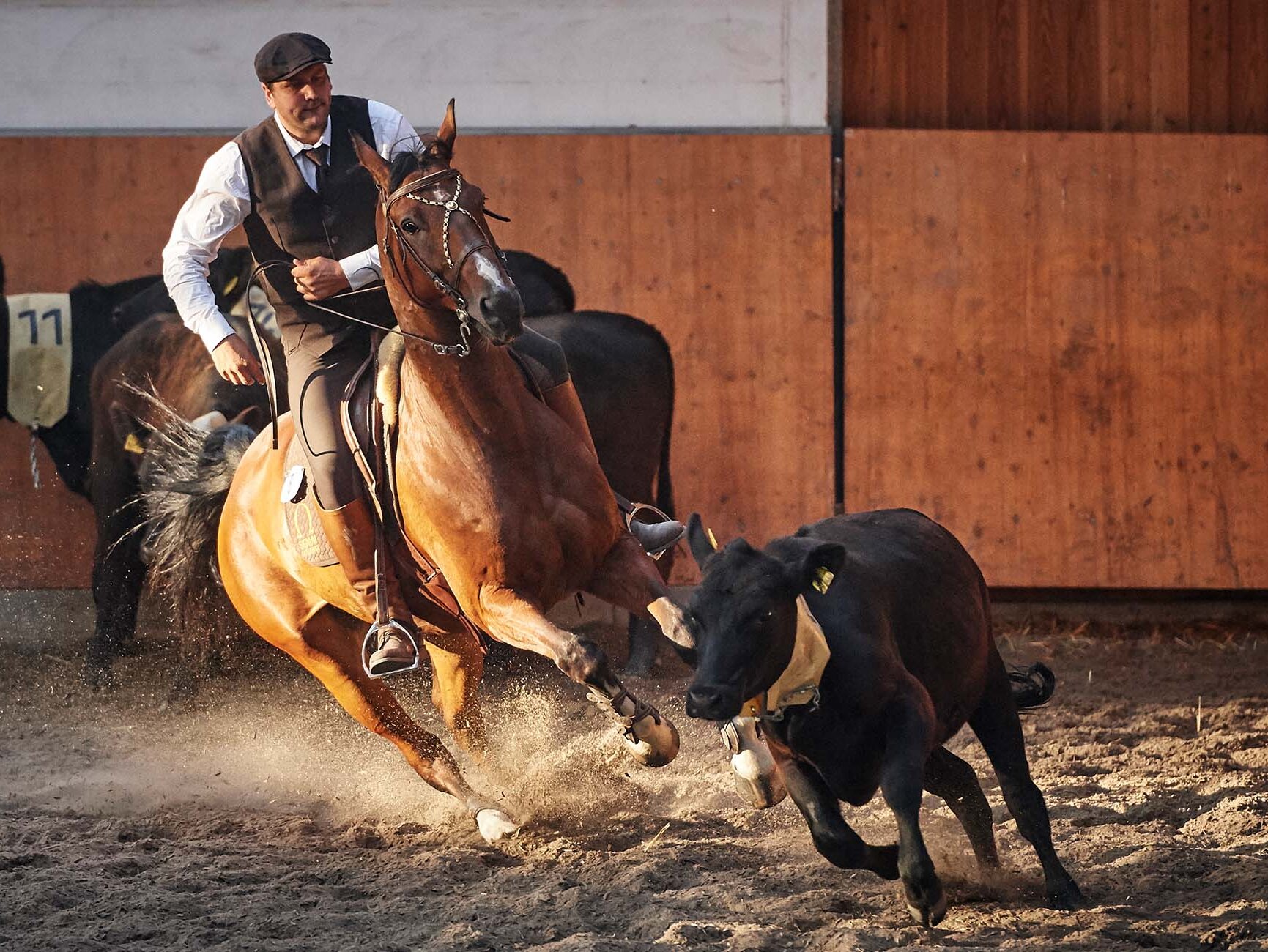
Before a horse and rider pair demonstrate their cattle work skills at a competition, the participants should gain experience with their own horse on several courses and learn the right tactics. Following a course with a licensed cattle trainer and experienced rider, horse and rider can take the test for the so-called cattle licence. The cattle licence for the horse and rider is a prerequisite for being allowed to take part in the 4th partial discipline of cattle work from L level upwards.
What is a cattle licence?
A prerequisite for participation in the cattle work sub-discipline at a Working Equitation competition is the possession of a cattle licence. This ensures that horse and rider have the basic knowledge of the needs and behaviour of cattle and have the riding skills required for cattle work.
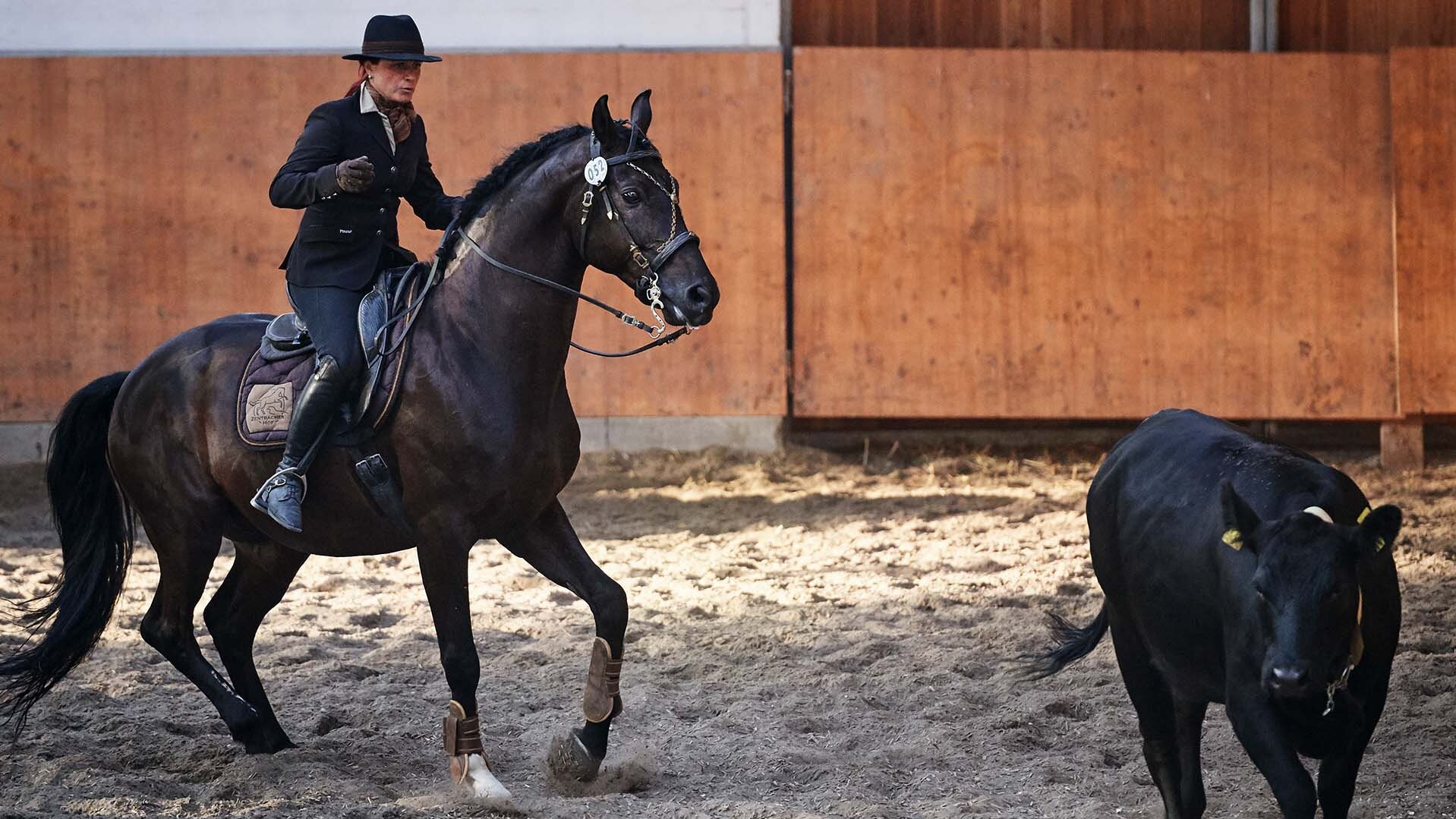
Riders can obtain a cattle licence with their horse on a cattle course with a cattle trainer certified by WED.eV. Theoretical knowledge about the correct setting of a herd of cattle and the behaviour of cattle is taught. The rider learns the necessary lessons and tight turns at a canter with his horse and must demonstrate them as an individual rider on a herd of cattle. To pass, the rider must separate 2 cattle individually and drive them over a specified line.
However, the cattle licence is only the minimum basic requirement. Horse and rider train the cattle work, as well as the other sub-disciplines of dressage, dressage trail and speed trail. The path to harmonious cattle work in the best time requires just as much training as dressage, dressage trail or speed trail. The goal is perfect teamwork between horse and rider as well as rideability with the finest aids, which enable concentrated and skilful cattle work in the best time.
Working Equitation World Championship 2018
The fascination of working equitation in Germany: German working equitation riders have been demonstrating their skills in the supreme discipline of cattle work at many working equitation competitions and German championships for many years. Under the direction of national coach Manolo Oliva, the German team became consecutive team world champions at the 2014 World Championships in Vienna, the 2016 European Championships and most recently under the direction of national coach Nuno Avelar at the 2018 Working Equitation World Championships, winning the gold medal in cattle work.
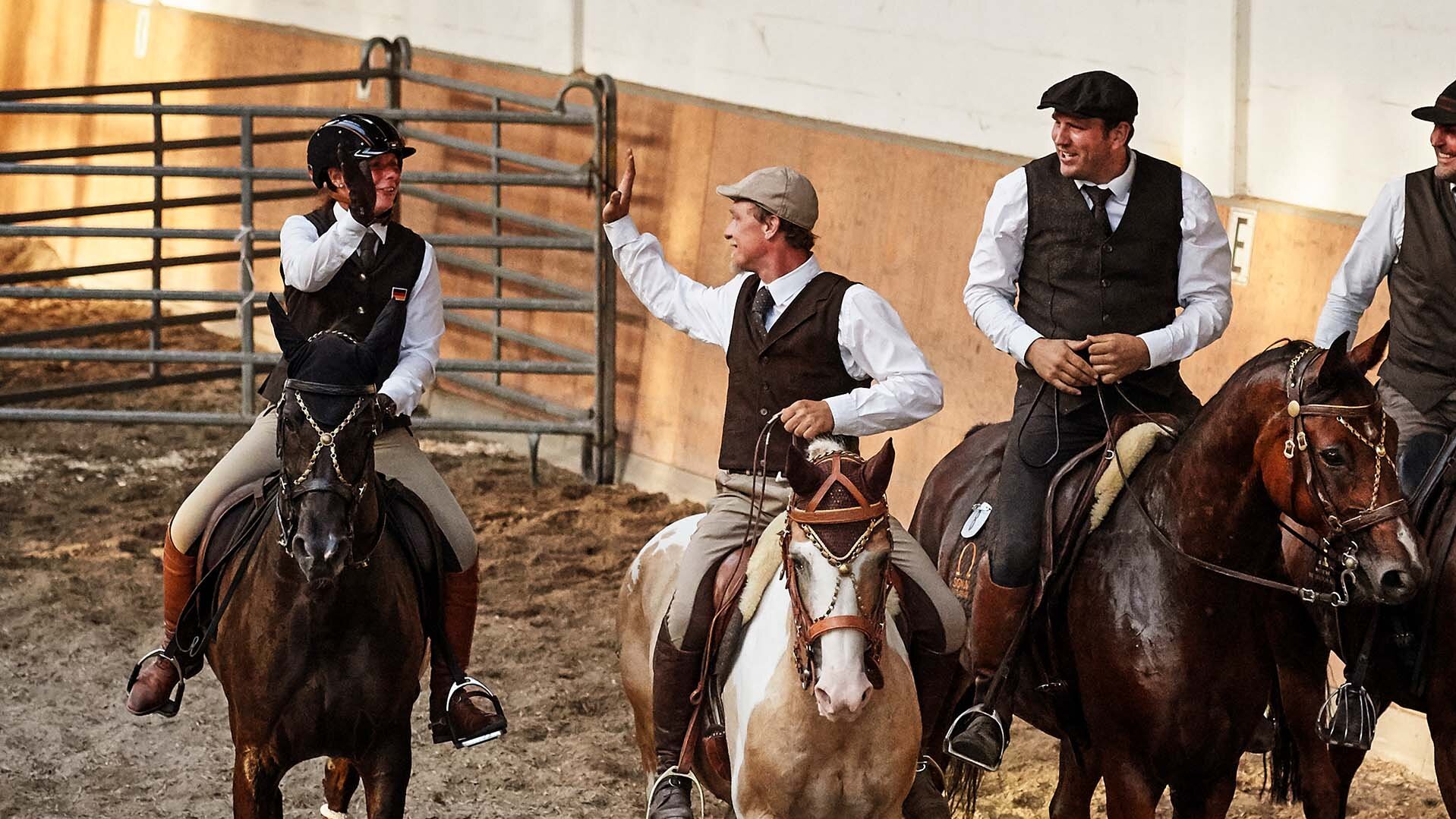
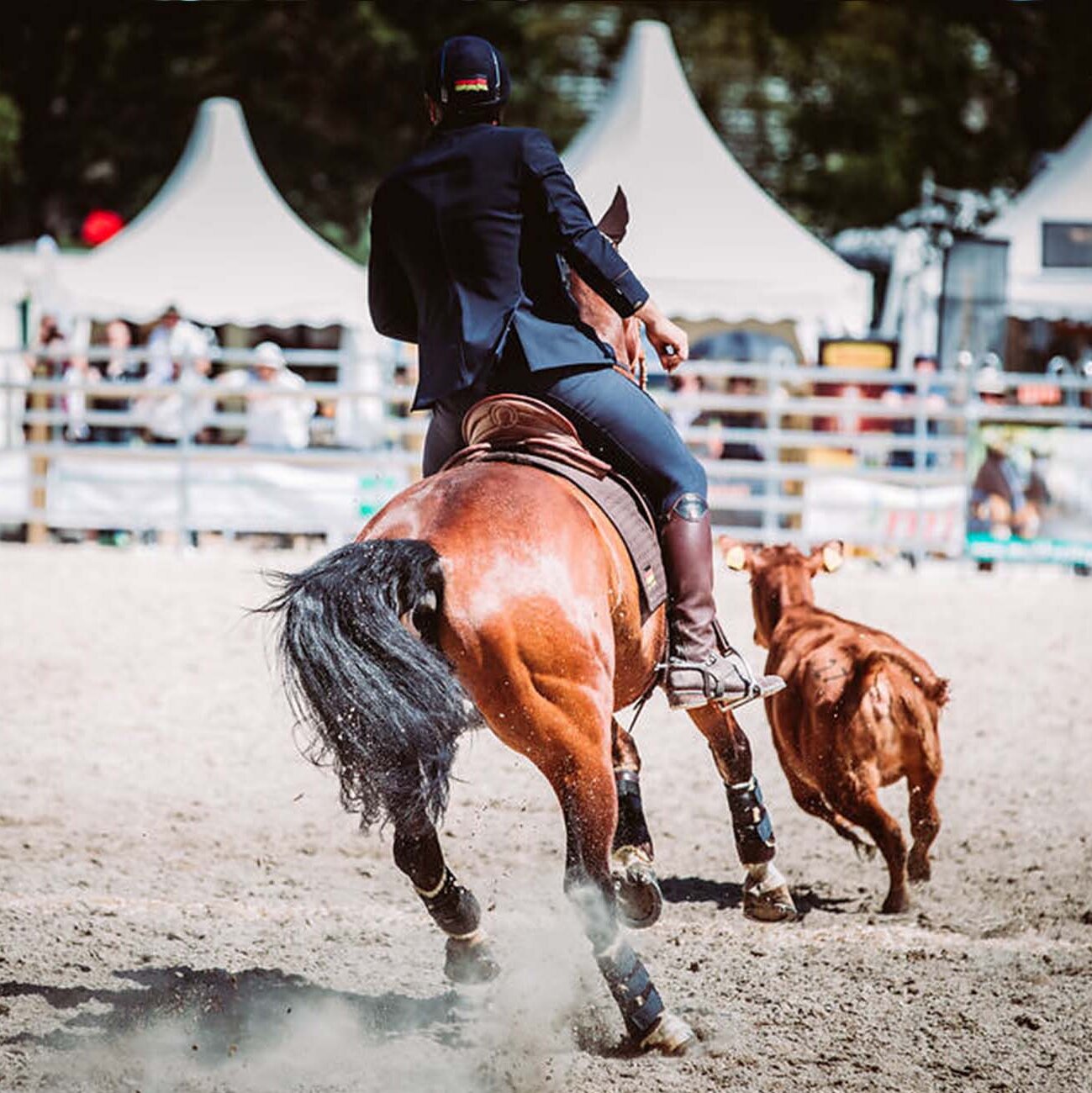
It is a pleasure to see how Working Equitation is bringing more than just fun and motivation to the show ring in this country. With cattle work, the heart and origin of working equitation is now also beating in this country.
What equipment do you need
- Special requirement: Working Equitation cattle licence
- A Working Equitation saddle suitable for horse & rider with a good fit, even in dynamic manoeuvres, stops or tight turns (link Working Equitation saddle)
- A well-fitting bridle and, if necessary, breastplate, which must not slip or restrict the horse's movement
- Gaiters and bell boots to protect the horse's legs
- The right clothing: Working Equitation waistcoat & Working Equitation basics (link shop)
- Well-fitting riding boots or riding shoes with chaps
